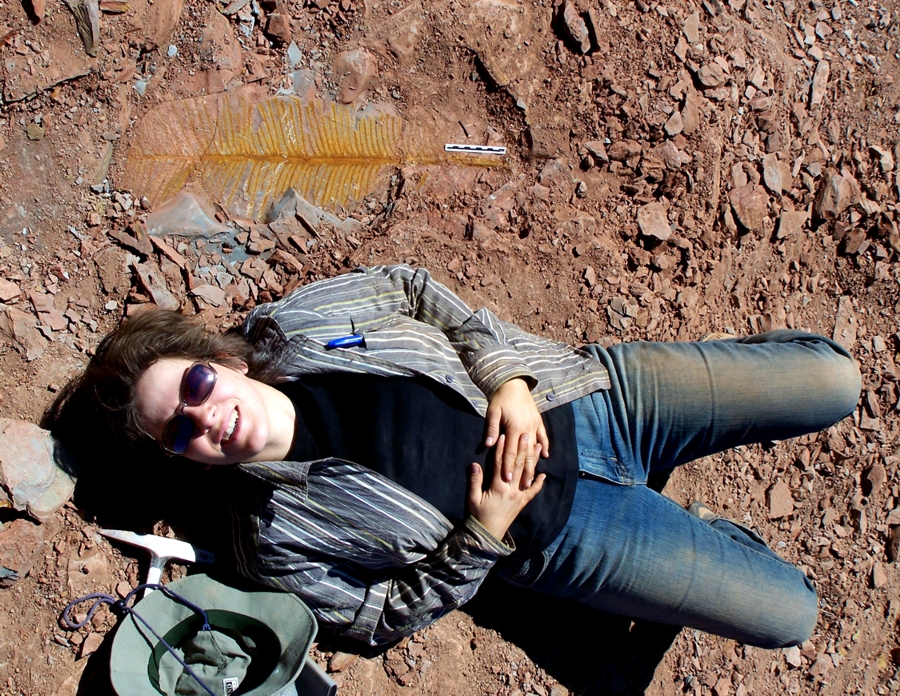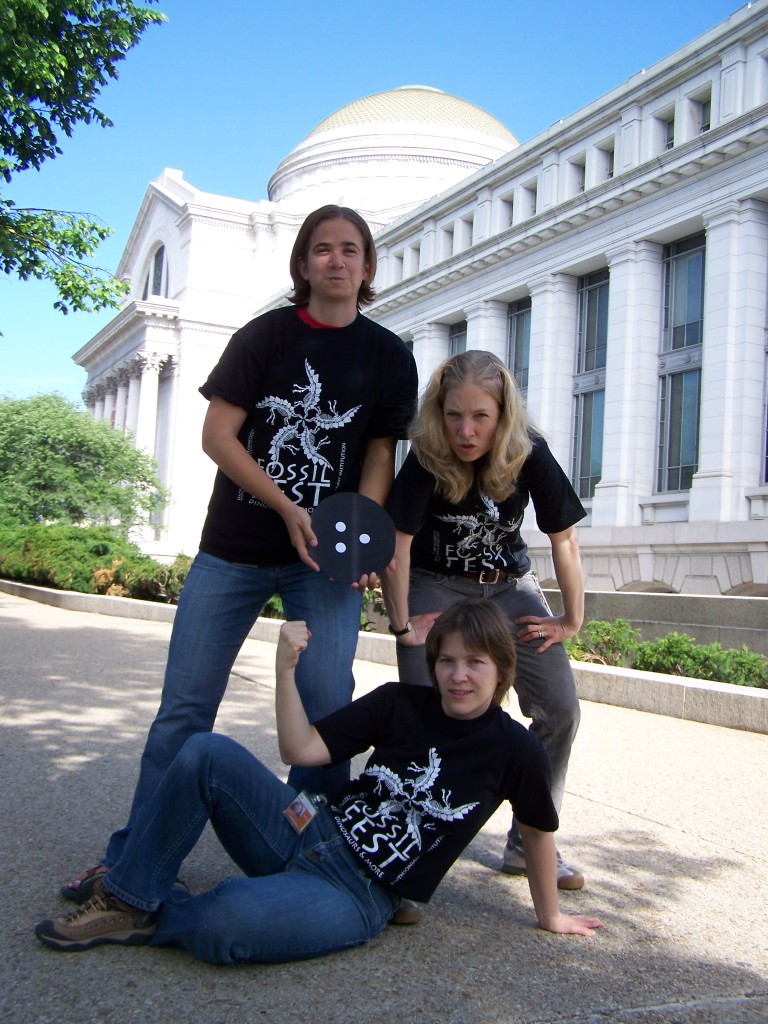
PhD from Utrecht University, MSc from University of Nijmegen
Field sites past & present: Sumatra (Indonesia), Netherlands, Italy, South Africa, Niger, Russia, the Adriatic Sea, California, Texas, and New Mexico
Anyone setting up a new laboratory in the near future needs to visit the Looy Lab at Berkeley for inspiration. I spent a couple weeks there last summer, and every day, I thought to myself, “When I get to Wyoming, I want a lab just like this!” The Looy Lab is nearly always full (when I was there, they had two profs, four-and-a-half graduate students, and at least four dedicated undergraduates, not to mention scientists from other labs who would drop in for a weekly coffee or to have lunch). Folks collaborate on each other’s research, take group trips to the Synchrotron to get high-resolution 3D images of fossils, and just plain look out for each other. Dr. Cindy Looy makes it a fun place to do science.
Cindy is a plant ecologist who works on really old fossils: ~310-245 million year old ones, to be specific. Forests during this time period looked very different from today because they were composed of giant club mosses, seed ferns, and early conifers. Cindy’s research questions focus on the largest mass extinction in Earth’s history (the Permo-Triassic Extinction, ~252 Ma) and the transition from a world with a large Antarctic ice sheet (Late Carboniferous) to a world without ice (Middle Permian). Got the relevance to the present? Excellent. Cindy’s quest for plant fossils from these time periods has literally taken her to all ends of the earth: from mountains in Russia, to deserts in Niger and South Africa, to badlands in Texas and New Mexico. Cindy’s fossils document the aftermath of the Permo-Triassic Extinction: a single genus of quilworts is dominant all over the world, and it took over five million years for Euramerican plant communities to return to pre-extinction diversity and complexity.
Although Cindy’s expertise is on Carboniferous and Permian conifers (one of her papers describes a new species which she named Lebowskia grandifolia – Jeff Bridges thought that was pretty cool), she is advising students doing graduate research on Devonian liverworts, Permian phytoliths, Cretaceous leaf fossils, pollen in recent lake cores, and even experimental manipulation of living plants. The fact that she can advise on such disparate projects speaks to her abilities as a big-picture scientific thinker.
Forgive me the focus these past couple days on paleobotany, but it was nearly impossible for me to write about Caroline Strömberg yesterday without also writing about Cindy, and now vice versa. So, indulge me in another quick trip down memory lane: Back in the good old days of 2007, the three of us roamed the third floor of Smithsonian, getting our science done, but also causing a ruckus that included daily 4PM banana fights and even a wrestling match on the National Mall (I won because, as Cindy put it, “You were throwing your overweight around”)! Cindy’s roommate was in the IT department, and we formed competing bowling teams. We would sure love it if the Paleochicks Bowling Team picture makes it into the next edition of the Taylor et al. paleobotany textbook, which features photographs of both plant fossils and the scientists who work on them. Anybody got connections?

For more information about Dr. Cindy Looy, visit: http://ib.berkeley.edu/labs/looy/index.html
Paleochicks! Love it!